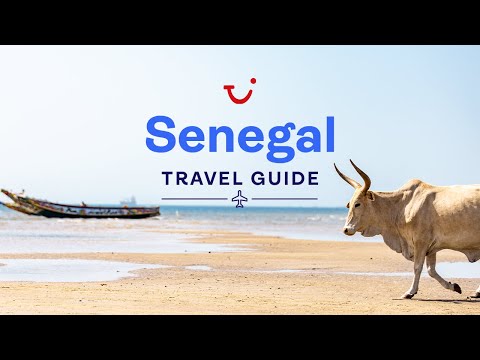
Located on the westernmost point of the African continent, Senegal is a country rich in culture, history, and natural beauty. Known for its vibrant cities, beautiful beaches, and friendly locals, Senegal offers a unique blend of traditional African heritage and French colonial influence. Whether you’re planning a leisurely beach holiday or an adventurous exploration of wildlife and landscapes, this TUI travel guide provides essential tips and recommendations for your journey to this captivating country.
**1. Dakar: A Bustling Metropolis**
Start your adventure in Dakar, the capital city of Senegal. This bustling metropolis is famous for its lively markets, historical sites, and diverse music scene. Don’t miss the chance to visit the IFAN Museum of African Arts to get a glimpse of some of West Africa’s most significant art collections. Take a stroll around the vibrant markets like Marché Sandaga or Marché HLM for local crafts and textiles.
Dakar also serves as a gateway to Île de Gorée, an island marked by its history as a center during the Atlantic slave trade. A visit here is both profound and educational.
**2. St Louis: Charm and History**
A few hours north of Dakar lies Saint-Louis, renowned for its colonial architecture and annual jazz festival. Once the capital of French West Africa, this city exudes old-world charm with its well-preserved buildings and narrow streets. Explore the historic island district on foot or by horse-drawn carriage to fully appreciate its picturesque scenery.
**3. Saly: Sun-Soaked Relaxation**
For those seeking sun-kissed relaxation, head down to Saly Portudal on Senegal’s Petite Côte (Little Coast). This area is popular among tourists for its expansive sandy beaches lined with coconut palms and resort facilities offering various water sports activities including jet-skiing and deep-sea fishing.
**4. Nature Reserves: Rich Biodiversity**
Wildlife enthusiasts should explore one or more of Senegal’s national parks such as Niokolo-Koba National Park or Djoudj National Bird Sanctuary—a UNESCO World Heritage site that hosts one of Africa’s largest bird populations including migratory species like flamingos.
The Saloum Delta also offers an opportunity to see mangrove forests and rare aquatic life by boat—a perfect adventure for nature lovers.
**5. Casamance Region: Cultural Diversity**
Venture into Casamance in southern Senegal known for its distinct cultural identity compared to other parts of the country due primarily to ethnic groups such as Diola maintaining strong cultural traditions.
The region’s lush landscapes contrast sharply with the Sahelian zone in northern parts making it ideal for agriculture-supported communities.
**6. Practical Tips**
– **Currency:** The local currency is CFA franc (XOF). Credit cards are accepted in major hotels but carrying some cash is advisable especially when shopping locally.
– **Language:** French is official; however many indigenous languages are widely spoken including Wolof which you might find useful learning basic phrases.
– **Transport:** Domestic flights can save time traveling across regions; however buses are plentiful providing cheaper ways exploring nearby areas.
– **Safety:** Generally safe but standard precautions should be taken especially in crowded areas.
– **Climate:** Tropical climate with distinct wet (June-October) dry seasons (November-May) so plan accordingly depending on activities planned out there!
**7 Conclusion**
Senegal offers something special whether it’s exploring Dakar’s cosmopolitan streets soaking up Saly’s sunny beaches delving into St Louis’ historical allure observing wildlife or experiencing Casamance’s rich culture making it an extraordinarily attractive destination among travelers seeking diversity beyond typical tourist paths.
With these tips from TUI you’re ready embark on unforgettable experience discovering incredible landscapes vibrant cultures warm hospitality that define amazing Senegal!
